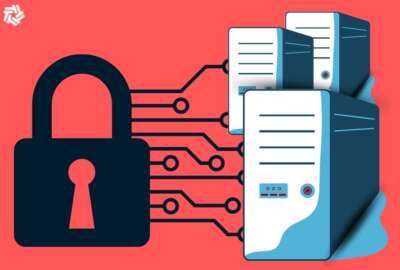Census Opportunity Project to launch ‘sprints’ on future workforce, 2020 count
The Census Bureau on Friday showcased its work connecting agencies that produce treasure troves of data with industry, academia and local communities that can act...
The Census Bureau on Friday showcased its work connecting agencies that produce treasure troves of data with industry, academia and local communities that can act on that data.
“Washington is a town with lots of data, but little information,” Patrick Pizzella, the Labor Department’s deputy secretary, said. “This is a bit of our challenge, and your challenge: Finding a way to converting the data you’re accumulating — a constant amount of it — and turning it into information so managers can make smart and informed decisions.”
Later this month, Pizzella said the Labor Department will formalize its data board and announce the appointment of a chief data officer within the agency — two major deliverables from the OPEN Government Data Act President Donald Trump signed into law in January.
Drew Zachary, the director and co-founder of The Opportunity Project, said the public-private partnership helps “put data to work for people” — turning government information into tools and actions that make an impact on the public.
Later in 2019, The Opportunity Project will launch 14-week “sprints” focused on improving the workforce and the 2020 census count. The program, working alongside the Office of Management and Budget, will also launch a challenge on Challenge.gov focused on those two goals.
The Opportunity Project has helped more than 30 federal agencies and 100 partner companies, universities and local groups build more than 70 public-facing digital tools.
“We work fast and we work collaboratively to get to a better solution in less time and more efficiently,” Zachary said.
The Department of Health and Human Services took part in one of the 14-week sprints last year. Working alongside its partners, it developed 11 new data tools as a result.
During the sprint, 10 teams worked on two challenges: One focused on using artificial intelligence to improve clinical trials, and another on using emerging tech to address Lyme- and tick-borne illnesses.
“At HHS, we recognize that government alone cannot solve pressing health problems. It takes much more than government,” said Ed Simcox, the chief technology officer and acting chief information officer.
Commerce aims to ‘crowd-source’ software development
Neil Jacobs, the assistant secretary of Commerce for environmental observation and prediction, carrying out the role of the undersecretary of Commerce for oceans and atmosphere, said the agency has worked with cloud vendors to put its data into the hands of startups and businesses.
That data, Jacobs said, could help users create ideas for businesses and help boost the startup economy.
Commerce has also released its source code for our data. Jacobs said one of his goals is to translate the code into a more user-friendly computer language.
“If we can get the code user-friendly enough, and run on architecture that the community has access to, my hope and my dream is that we essentially crowd-source software development,” Jacobs said. “That’s where, I think, things will really accelerate.”
The Commerce Department collects terabytes of data every day — everything from atmospheric data from smart phones to weather data pulled from smart-cars.
“If you get in your car and Bluetooth your phone [and] turn on your windshield wipers, we know you’re driving through rain,” Jacobs said.
But storing that much data raises as many challenges as it does opportunities.
“When we’re trying to run weather models, we’re pulling in this data and sticking them into the model as fast as we can. The data actually has a shelf life,” Jacobs said. “The faster we can get the data into the model, the better. If we can’t get the data in before we kick off the model run, the data is useless.”
As a result, the agency is looking at ways artificial intelligence and machine learning can parse the satellite data, thin it out to move it from point A to point B.
“We’re constantly going to be playing catch-up with the volume of data that we’re dealing with,” Jacobs said.
The President’s Management Agenda lists leveraging data as a strategic asset as one of its cross-agency priority goals. Over the past year, Office of Management and Budget director for management Margaret Weichert has urged agencies, under the PMA, to find opportunities to commercialize their data.
FEMA: ‘Taking action now, before something has happened’
Mining federal data also helps disaster response agencies save lives during an emergency.
Between 2017 and 2018 the Federal Emergency Management Agency provided assistance to more than 45 million Americans impacted by natural disasters in the past year.
Alex Amparo, FEMA’s assistant administrator, said the agency is working with The Opportunity Project to build a “culture of preparedness.”
“Taking action now, before something has happened, it is exciting,” Amparo said.
By leveraging the data that’s available, Amparo said FEMA and its partners can help identify the one-in-11 bridges in the country that are near failure.
“Understanding a millimeter’s difference in how a bridge may move can make the difference between life and death,” he said.
That culture of prevention also applies to mitigating the cyber threats to sectors ranging from electricity to wastewater management.
“These tools are part of the beginning,” Amparo said.
Copyright © 2025 Federal News Network. All rights reserved. This website is not intended for users located within the European Economic Area.
Jory Heckman is a reporter at Federal News Network covering U.S. Postal Service, IRS, big data and technology issues.
Follow @jheckmanWFED






